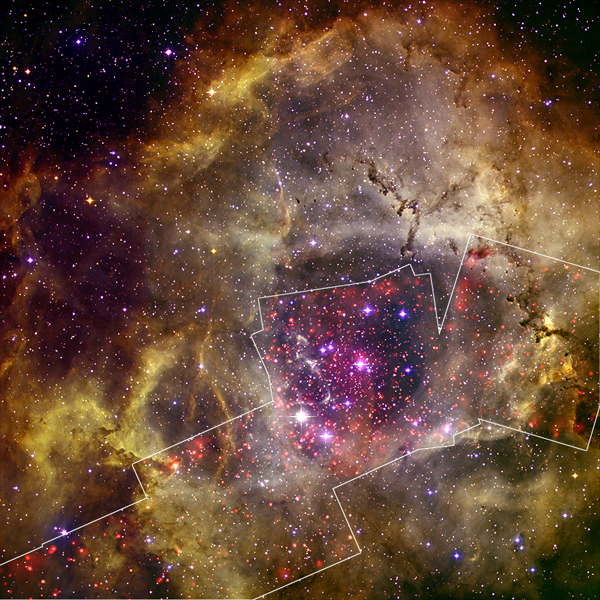Rosette Nebula: A star-forming region 5,000 light years away in the constellation Monoceros.
Caption: This X-ray and optical image shows the Rosette star formation region, located about 5,000 light years from Earth. The Chandra X-ray data shows hundreds of young stars in the central cluster and fainter clusters on either side. The central cluster appears to have formed first, producing a burst of radiation and stellar winds that caused the surrounding nebula to expand, triggering formation of two neighboring clusters. The optical data shows large areas of gas and dust, including giant pillars that remain behind after intense radiation from massive stars has eroded the more diffuse gas. The presence of several X-ray emitting stars around the pillars shows star formation is continuing in the region.
Chandra X-ray Observatory
ACIS Image
|


